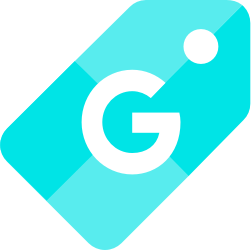Google Shopping Ads for Ecommerce: Your Growth Agency
Search engine marketing is hard.
And, with the rollout of Performance Max, dealing with Google Shopping Ads, Google Merchant Center, and “product feeds” can feel even more confusing.
Why?
Because unlike other PPC channels, Google Shopping campaigns run on complex data files that make ROAS feel like a maze of platforms, spreadsheets, and jargon.
Maybe you’ve run Google Ads for ecommerce without getting the results you wanted.
Maybe you’re just busy running your business and want a partner you can trust.
Or, maybe you’ve worked with other agencies who reported strong numbers, yet somehow failed to unlock new growth.
Let's talk new-customer acquisition on paid search:
Want more details? Keep going. It’s all right here …

Unlike Other Google Ad Agencies
We run Google campaigns for direct-to-consumer ecommerce brands
There are many ways to set up Google Ads.
And setting up Google Ads for ecommerce is not the same as it is for local retailers or B2B websites that want to generate leads.
Common Thread Collective is an ecommerce growth agency, built for one thing: profitability.
That means, when it comes to search, we focus our attention on Google Shopping and the product data feeds that power them.
This focus doesn’t neglect other paid-search placements — like Google Search Ads (Adwords), display ads, search remarketing, or even YouTube.
It does, however, give us unique insights into the mistakes ecommerce stores and Google agencies make.
In fact, righting three wrongs is precisely why our clients trust us to help them grow …
1. Under Spending on Google Shopping
Two-thirds of all paid clicks on Google go to product listing ads (PLAs) — also known as Google Shopping Ads or Smart Shopping Campaigns.
Unfortunately, most search budgets dramatically underspend on this prime and high-intent ad space. Worse, rather than optimize your product feed to display key buying triggers, data gets abandoned to its default setting.
If you’re not spending >60% your budget on Shopping campaigns, then we can unleash Google Shopping as a new customer engine.
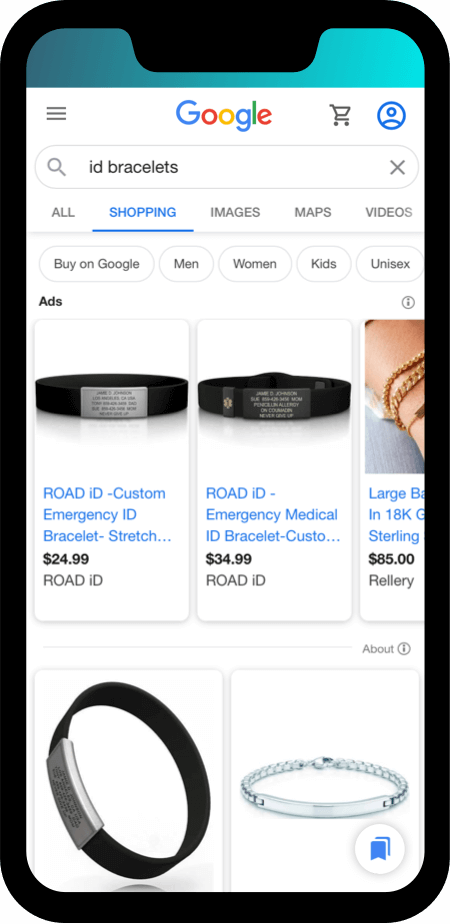
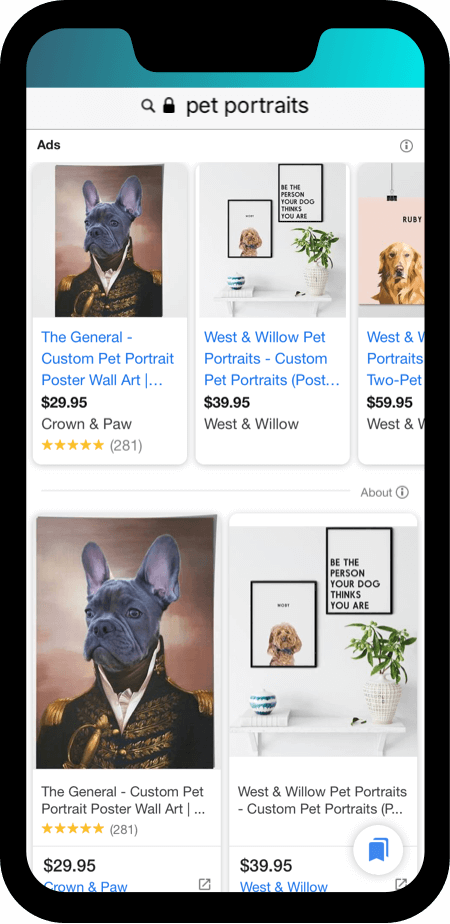
Product reviews
Product category
Product title
Product description
Product groups
Product type
Product images
2. Over Spending on Branded Search
Numbers can lie. Real numbers. Even ROAS numbers.
We see it all the time. Branded search ads are pivotal to an overall SEM strategy. But over budgeting leads to truncated results that look great on agency reports … but terrible on your business’ P&Ls.
If you’re currently spending more than 10% on Branded Search, we can dramatically improve your account’s efficiency.
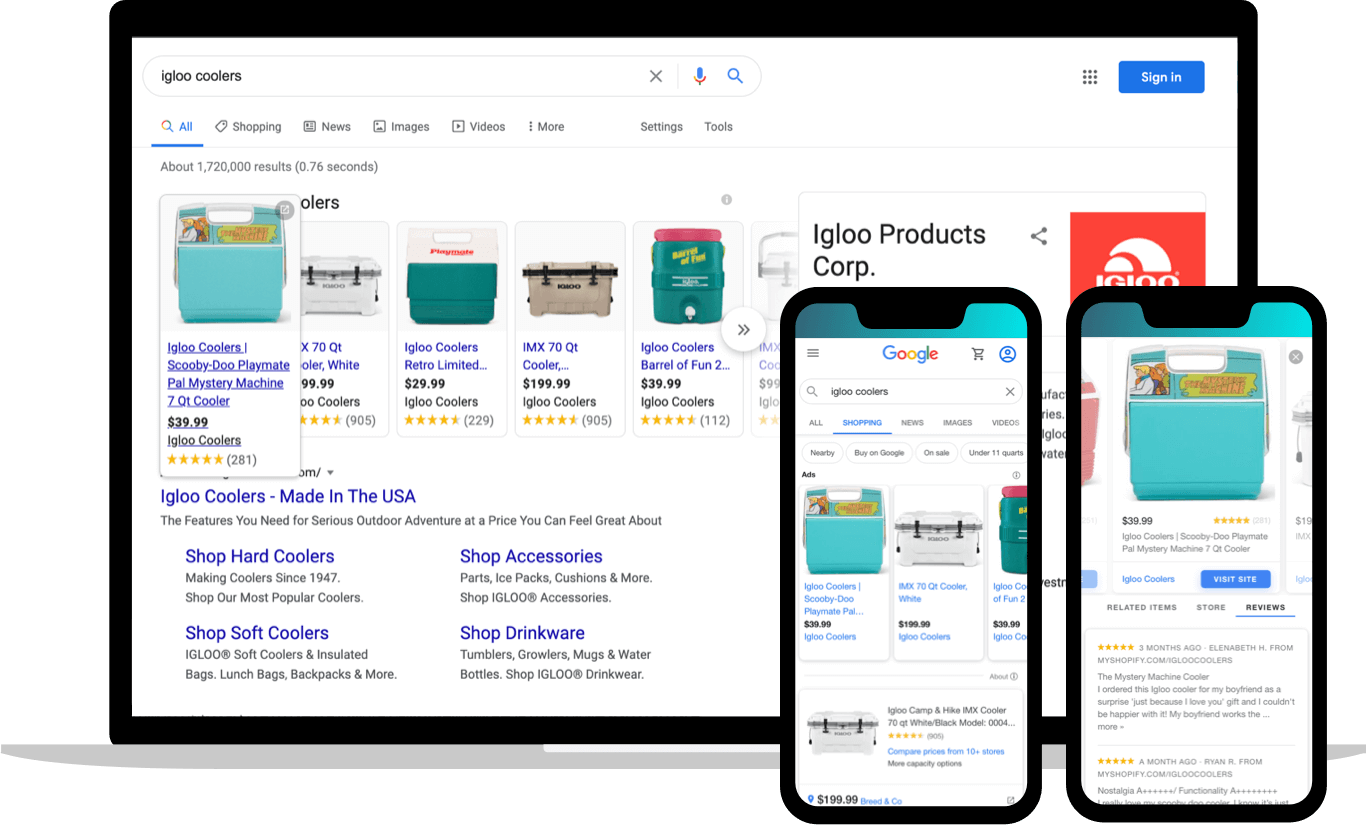
3. Bottom of the Funnel ‘Scraps’
The real key to scaling search engine marketing goes beyond search.
It’s a full-funnel approach that uses the power of Performance Max to infuse your best creative into channels like YouTube and display advertising. Customizing content for placement and performance unleashes your brand everywhere customers turn.
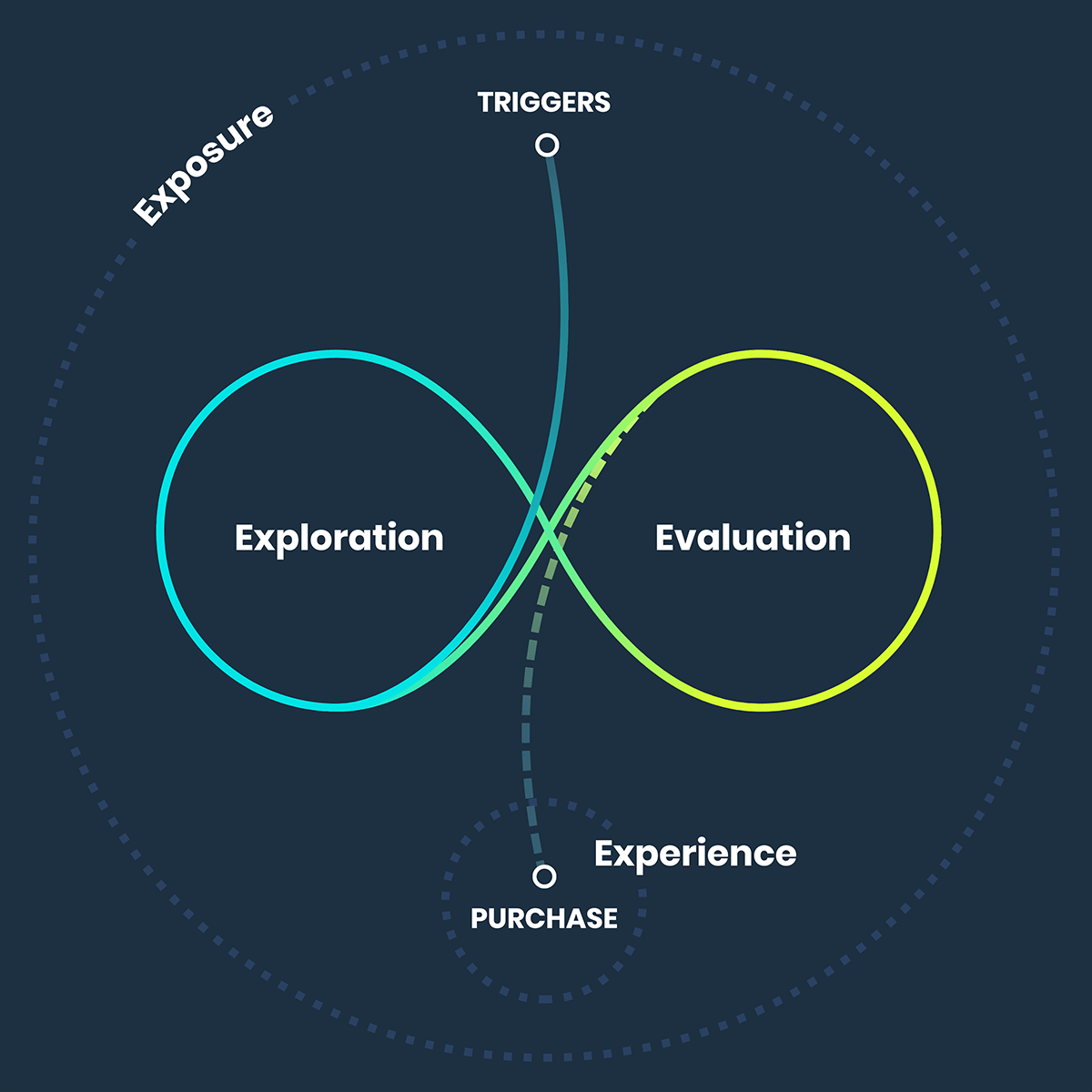
Google calls this new shopping behavior the “messy middle.”
We call it the “brand lasso” — uniting demand generation with demand capture:
- >60% Google Shopping Ads
- 20% Search Text Ads (Adwords)
- <10% Branded Search Terms
- 8% Video and YouTube
- 3% Display Network
If you’re stuck using paid search to capture bottom-of-the-funnel shoppers, we can unlock new growth at scale.



“Common Thread Collective has been a true partner in our growth. They’ve helped us achieve a 5.66 ROAS across Google Ads while scaling, and combined with managing our social spend, we’ve seen paid media return of over 30% YoY.”
Bram Hutchinson,
VP Ecommerce at Igloo
It all starts with a
free Google
Account Audit to find out if we’re the right partner.
This detailed checklist unearths what’s holding your brand back — as well as your biggest opportunities …
- Conversion Tracking: Correct setup and configuration for Google Ads Conversion Tag and Global Site Tag
- Ads, Bid Strategy & Campaigns: Audit cost-per-click, conversion rate, daily budget, Quality Score, and ads to Ad Group ratio (2:3)
- Search Engine Results Pages (SERP): Keyword research and extensive test searches for all applicable Ad Extensions
- Creative: Ad copy, Responsive Search Ads, Responsive Display Ads, Dynamic Search Ads, Expanded Text Ads, and YouTube videos
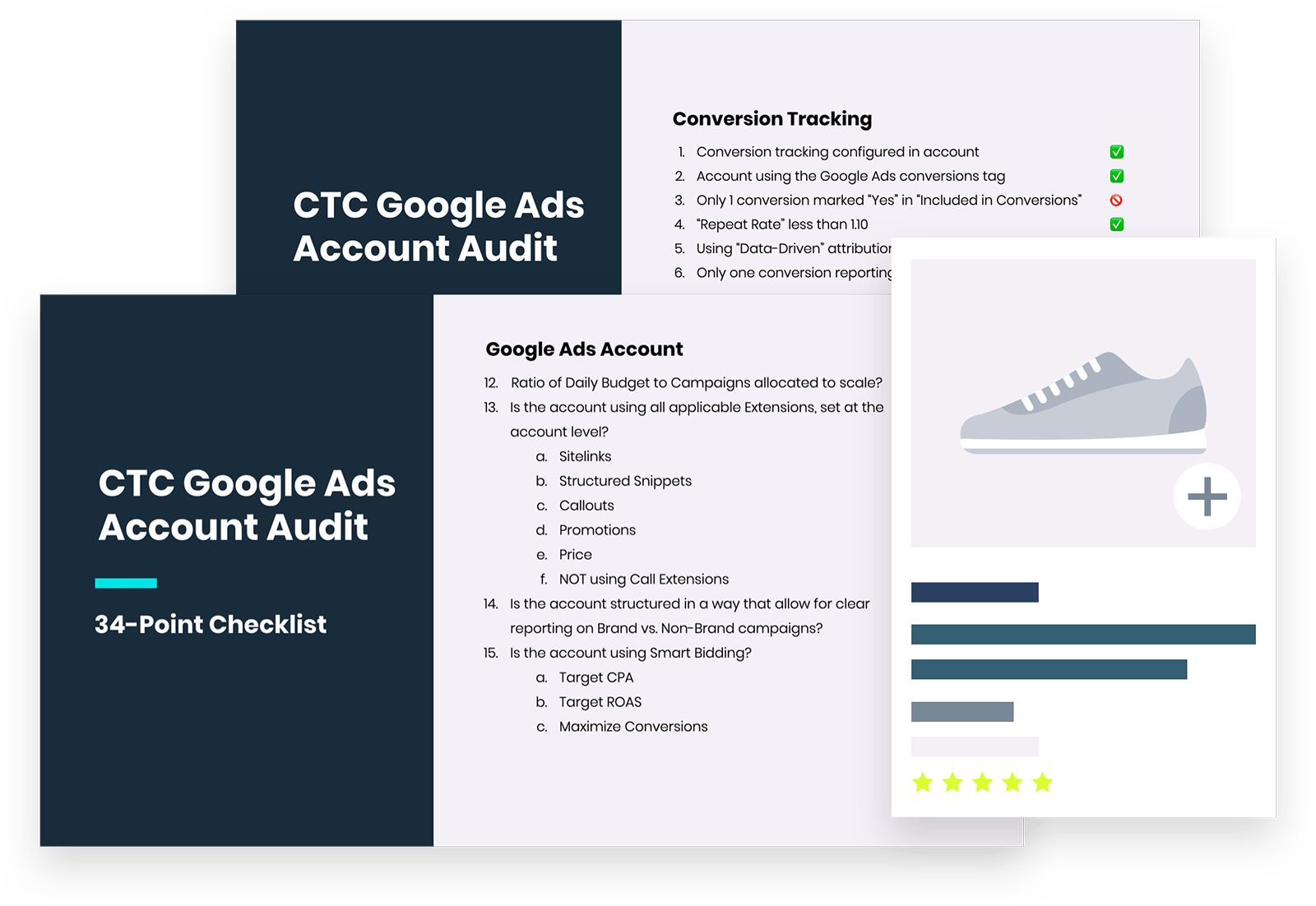
Build your full-funnel paid search approach today:
Want more details? Keep going. It’s all right here …

Advertising on Google Search
What to Expect & How We Get Results
New account setup or extended audit
Each project begins with either our full-funnel setup or an extended audit. We’ll examine everything from keyword research, targeted search queries, negative keywords, competitors, campaign types, to bidding strategy.
Dedicated search-marketing buyer
Every brand is paired with a dedicated Google Ads buyer who is responsible for planning and executing your buying strategy. Together, you’ll set KPIs anchored to your ecommerce business’ larger goals.
Shopping feed management
Our buyers are seasoned Google Shopping experts and go deep on shopping campaigns, product feed setups, and optimizations within Shopify (or your ecommerce platform), Google Merchant Center Account, and Google Ads.
Google Ads & Google Analytics setup
Connecting Google Ads with Google Analytics ensures your audiences are properly united for retargeting, specifically Google’s newest version of cross-device remarketing called Signals.
Custom reporting & performance reviews
After we link client-side reporting, we’ll also build dashboards for weekly reviews on the metrics that matter most: click-through rates (CTR), conversion value, and ROAS — not just for your account at large but for specific products.
Then, once a month, we’ll meet to explore account performance and industry-wide ecommerce trends.



